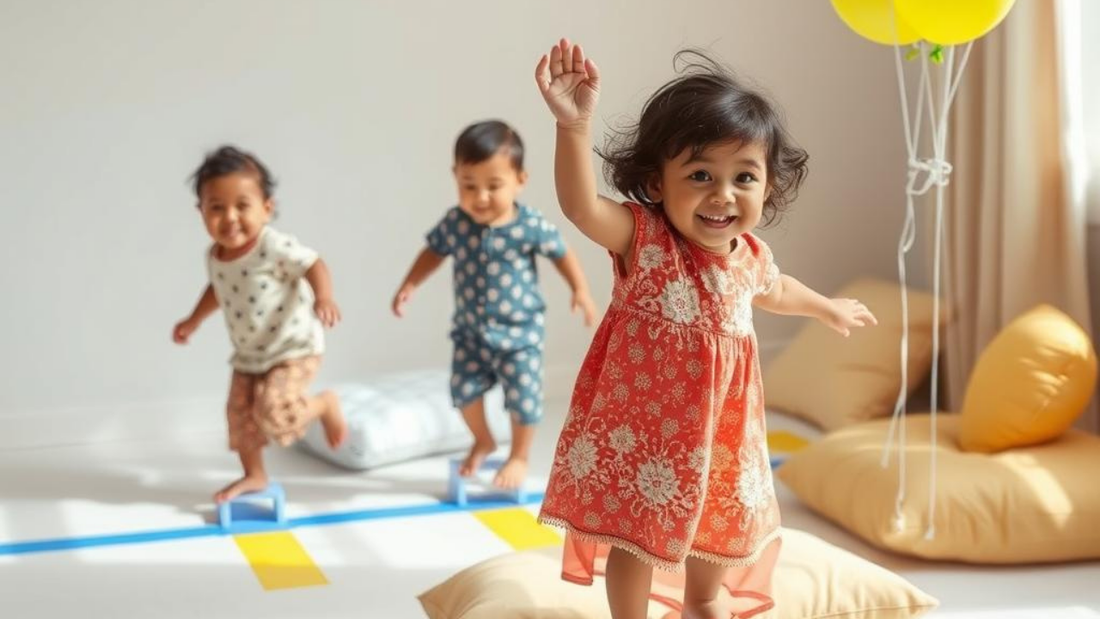
Gross Motor Skill Builders: Fun Games to Improve Balance and Coordination
LiLLBUDGross motor skills form the basis for a child to move, play, and navigate the world with confidence. They work the major muscle groups of the arms, legs, and core, necessary for activities such as running, jumping, climbing, and balancing. Effective gross motor development also promotes posture, stamina, and general physical health.
Whether your child is learning to walk for the first time or running around the playground, playing games that improve balance and coordination is both easy and entertaining. Below are active, simple-to-prepare activities that promote gross motor skills at home, in the yard, or even inside.
Why Gross Motor Skills Matter
Developing balance and coordination at an early age supports:
-
Better posture and core strength
-
Improved sports performance
-
Reduce falls and injuries
-
Confidence in active play and social interaction
Children who practice gross motor activities regularly often find it easier to participate in school PE classes, playground games, and extracurricular sports.
Fun Gross Motor Skill-Building Games
1. Balance Beam Challenge
Use masking tape to create a straight line on the floor or use a wooden plank as a low balance beam. Ask your child to walk forward, backward, or sideways. Make it trickier by asking them to carry a small object or balance a beanbag on their head. It enhances balance, spatial awareness, and coordination.
2. Animal Walk Races
This is a fun game; ask the children to pretend like an animal and act like them. Such as, hop like a frog, waddle like a duck, crawl like a bear, or tiptoe like a cat. If you are hosting a kids' party or organizing a fun school event, then you can turn it into a race. This enhances strength, agility, and body control.
3. Obstacle Course Adventure
Create a mini obstacle course with cushions, chairs, cones, and jump ropes, you can also include a cardboard tunnel and include tasks like crawling under this tunnel, hopping over pillows, and zig-zag running. This promotes problem-solving, coordination, speed, and endurance.
4. Balloon Keep-Up
Blow up a balloon and challenge your child to keep it from touching the ground. You can also add variations, such as using only one hand, using feet, or playing in teams. This targets hand-eye coordination, reaction time, and balance.
5. Hopscotch
This is such a fun game, and you can include numbers, alphabet, and many more recognition concepts while playing this game. Draw a hopscotch grid with chalk outdoors or tape one indoors. Encourage hopping on one foot, then switching to the other. This game enhances leg strength, balance, and number recognition.
6. Rolling & Catching Games
Roll a large ball back and forth or practice gentle throwing and catching. You can increase difficulty with smaller balls or longer distances. This activity targets core stability, motor planning, and coordination.
7. Freeze Dance
Play music and have your child dance around. When the music stops, they must freeze like a statue. Join them in this fun dance game. This enhances in improving listening skills, balance, and body control.
Tips for Parents
-
Start simple and gradually add challenges.
-
Play barefoot indoors to strengthen foot muscles and improve sensory feedback.
-
Praise effort, not just success, it builds motivation and self-esteem.
- Join in on the fun! Playing with your child makes them more likely to be active.
Final Thoughts
Adding gross motor skills activities into everyday play can be done with very less preparations and with the materials available at home. By being a bit creative, you can convert everyday areas into exciting places of learning. By emphasizing games that promote balance and coordination, you're providing your child with the tools they need for a lifetime of active, healthy living.

